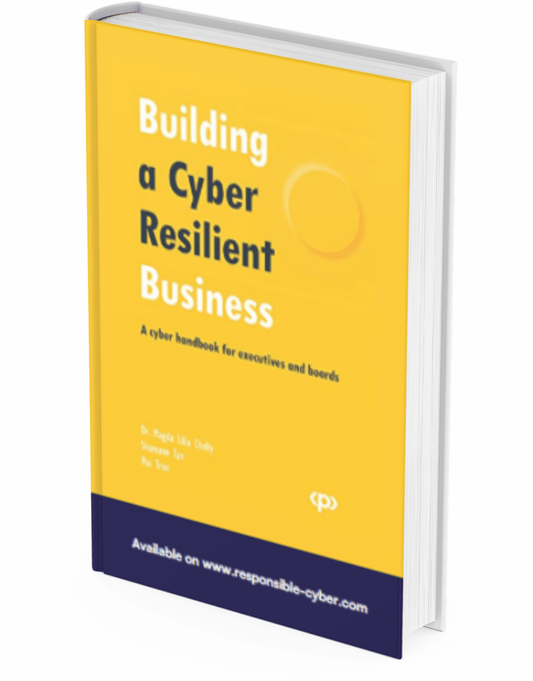Cyber Awareness 2024: Top Threats and How to Stay Ahead

Cyber Awareness 2024: Top Threats and How to Stay Ahead
Introduction to Cyber Awareness
As we move into 2024, the cyber threat landscape continues to evolve, presenting new challenges for individuals and businesses alike. Staying ahead of these threats requires a proactive approach to cyber awareness, understanding the latest trends, and implementing best practices to protect against potential attacks.
Top Cyber Threats in 2024
The following are the most significant cyber threats anticipated for 2024:
1. Ransomware Evolution
Ransomware attacks have become increasingly sophisticated, targeting critical infrastructure and large enterprises. In 2024, we expect to see ransomware tactics evolve, with attackers using double extortion methods, where they not only encrypt data but also threaten to leak sensitive information unless a ransom is paid.
2. Supply Chain Attacks
Supply chain attacks involve compromising a trusted third-party vendor to infiltrate the primary target. These attacks are challenging to detect and can have widespread impacts. As businesses rely more on interconnected systems, the risk of supply chain attacks will continue to grow.
3. Phishing and Social Engineering
Phishing attacks remain a prevalent threat, with attackers using increasingly sophisticated social engineering tactics to deceive individuals into revealing sensitive information. Expect more targeted spear-phishing campaigns and business email compromise (BEC) schemes in 2024.
4. IoT Vulnerabilities
The proliferation of IoT devices has expanded the attack surface for cybercriminals. Many IoT devices lack robust security measures, making them prime targets for exploitation. Securing IoT ecosystems will be crucial to mitigating these risks.
5. Cloud Security Threats
As more organizations move their operations to the cloud, the security of cloud environments becomes paramount. Misconfigurations, inadequate access controls, and vulnerabilities in cloud services can lead to significant data breaches and other security incidents.
6. Artificial Intelligence (AI) Exploitation
While AI offers numerous benefits, it can also be weaponized by cybercriminals. AI-driven attacks can automate and scale cyber threats, making them more effective. Expect to see AI used in sophisticated phishing campaigns, malware development, and even in breaching security defenses.
Strategies for Enhancing Cyber Awareness
To stay ahead of these evolving threats, individuals and businesses must adopt a proactive approach to cyber awareness. Here are actionable tips and best practices:
1. Regular Security Training
Conduct regular cybersecurity training sessions for employees to educate them about the latest threats and how to recognize and respond to them. Simulated phishing exercises can help improve awareness and response times.
2. Implement Multi-Factor Authentication (MFA)
MFA adds an extra layer of security by requiring multiple forms of verification before granting access. This reduces the risk of unauthorized access due to compromised credentials.
3. Keep Software and Systems Updated
Ensure that all software, operating systems, and devices are regularly updated with the latest security patches. This helps protect against known vulnerabilities that attackers might exploit.
4. Use Strong, Unique Passwords
Encourage the use of strong, unique passwords for all accounts and systems. Password managers can help users generate and store complex passwords securely.
5. Secure IoT Devices
Implement security best practices for IoT devices, such as changing default passwords, disabling unnecessary features, and regularly updating firmware. Segment IoT devices on a separate network to limit potential breaches.
6. Monitor and Respond to Threats
Implement continuous monitoring of networks and systems to detect suspicious activity. Develop and regularly test incident response plans to ensure quick and effective responses to security incidents.
7. Backup Data Regularly
Regularly back up critical data and ensure that backups are stored securely. This helps in recovering data in case of ransomware attacks or other data loss incidents.
8. Engage in Threat Intelligence Sharing
Participate in threat intelligence sharing with industry peers and cybersecurity organizations. Sharing information about emerging threats can help the community stay informed and prepared.
Best Practices for Businesses
Businesses face unique challenges in maintaining cybersecurity. Here are additional best practices specifically for organizations:
1. Develop a Cybersecurity Framework
Adopt a cybersecurity framework, such as the NIST Cybersecurity Framework or ISO/IEC 27001, to establish a structured approach to managing cybersecurity risks.
2. Conduct Regular Risk Assessments
Perform regular risk assessments to identify and prioritize potential security threats. This helps in allocating resources effectively to mitigate the most significant risks.
3. Implement Zero Trust Architecture
Adopt a zero trust security model, which assumes that threats can exist both inside and outside the network. Implement strict access controls and continuously verify user identities and device integrity.
4. Secure Cloud Environments
Ensure that cloud environments are configured securely. Use encryption, implement robust access controls, and regularly audit cloud security settings to protect data in the cloud.
5. Collaborate with Third-Party Vendors
Work closely with third-party vendors to ensure they follow strong security practices. Conduct regular security assessments of vendors and establish clear security requirements in contracts.
6. Enhance Physical Security
Implement physical security measures to protect critical infrastructure and data centers. Use access controls, surveillance, and environmental controls to safeguard physical assets.
Conclusion
The cyber threat landscape is continually evolving, presenting new challenges for individuals and businesses. Staying ahead of these threats requires a proactive approach to cyber awareness, continuous learning, and the implementation of robust security measures. By understanding the latest threats and adopting best practices, organizations and individuals can enhance their cyber resilience and protect against emerging cyber threats in 2024 and beyond.







